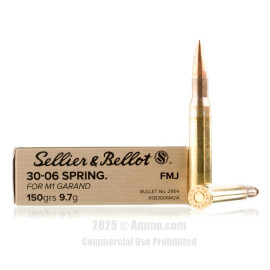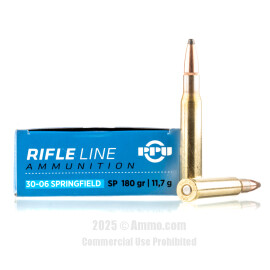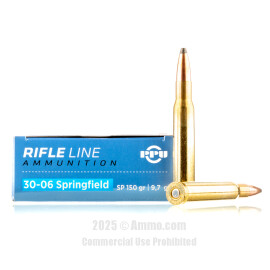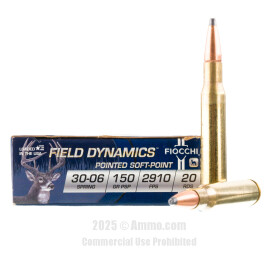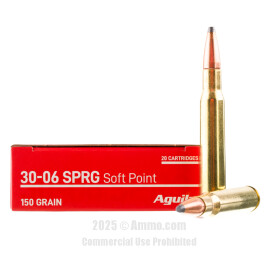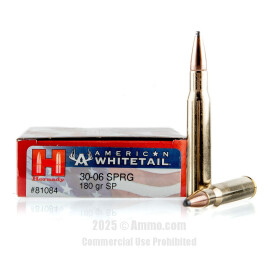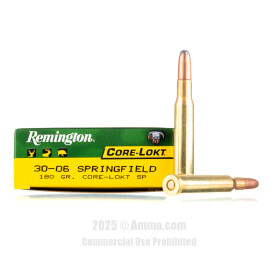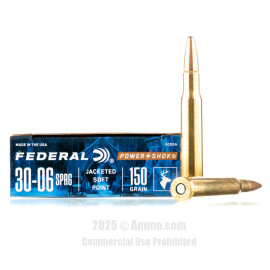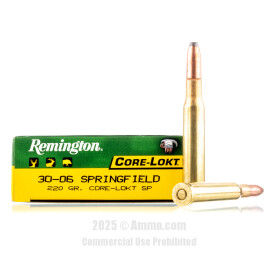
30-06 Ammo For Sale
Overview of 30-06 Ammo
In 1906, the U.S. Army adopted the .30-06 to keep up with the advancing technology of firearms and ammunition. For the next half-century, the U.S. military based its primary battle rifles on this cartridge. Although created for battle, the .30-06 was also rapidly accepted by civilian shooters and hunters. The United States Army continued to use the round well into the 1980s, and it is still a prized round of civilians.
What are the most popular .30-06 brands you sell?
You can filter our entire selection using the left sidebar to see which brands we currently have in stock and available using the Manufacturers filter. You can also filter by attributes such as Bullet Type, Bullet Weight, Casing Type, and Primer Type to find what you need.
Best 30-06 Ammo for Specific Uses
| Use Case | Details |
|---|---|
| Best 30-06 Ammo For Accuracy | Best Overall: Barnes 150 grain TTSX. Runner-Up: Remington 150 grain Scirocco Bonded. |
| Best 30-06 Ammo For Deer Hunting | Best Overall: Barnes VOR-TX 150 grain TTSX. Runner-Up: Remington CoreLokt 150 grain Scirocco Bonded. |
How Does The 30-06 Compare To Other Calibers?
| Caliber | Recoil | Pros | Cons |
|---|---|---|---|
| 25-06 Remington | 30-06 has more | 30-06 has flatter long-range trajectory, more stopping power, and less expensive | 30-06 has heavier recoil and slightly less accurate |
| 270 Winchester | 30-06 has more | 30-06 has more stopping power | 30-06 has worse trajectory and heavier recoil |
| 7.62x54r | 30-06 has slightly less recoil (Barely noticeable) | 30-06 has higher BC bullets and more hunting ammo options | 30-06 has slightly more expensive ammo |
| 7mm Remington Magnum | 30-06 has less | 30-06 has less recoil and less expensive ammo | 30-06 has worse long-range trajectory and less stopping power |
| 6.5mm Creedmoor | 30-06 has more | 6.5 Creedmoor has a flatter trajectory, less recoil, and better long-range accuracy | 30-06 has more stopping power and better terminal ballistics |
| 30-30 Winchester | 30-06 has more | 30-06 has flatter trajectory, more stopping power, and better long-range accuracy | 30-06 has more recoil |
You can also check out our in-depth look at 30-06 ballistics from all of the popular ammo manufacturers if you're searching for ballistics data for your favorite factory 30-06 load.
Customer Reviews
-
Shortround said:
I was shooting these bare eyed at 400 yards. from a remington bolt action. I was shooting from a bench. It took me 6 rounds to register were I wanted and then shot 50 more rounds with little deflection. Good stuff.
-
Gary said:
Just purchased 500 rounds of mil surplus 30-06 for my M1. Great pricing and prompt service. Will order again.
-
marine vet said:
The whole experience from buying to using the ammo was excellent
-
john said:
great rds.with a good group of three.
-
john said:
great ammo for my garand..will buy more.
-
john said:
good grouping..great rounds for M1Garand.
-
john said:
great rounds for my m1garand.will buy more.
-
Michael said:
Very difficult to load en bloc clip with this ammo. Took to gunsmith to see if garand was the problem, no issues. could see where the tip of the FMJ ammo was scrapping the inside of the receiver and causing interference. Loaded enbloc up with some soft point ammo and no problems.
-
john said:
will order more..good purchase for my m1 garand.
-
john said:
just bought another 100 rds..will buy again.
-
Red said:
Fast shipping
-
recon said:
great ammo..will buy more.
-
GUNNER69 said:
I WOULD BUY THIS AMMO AGAIN
-
Jolin said:
Very good
-
Sgt. Hawkeye said:
Breaking in a new barrel on a Garand. Fired twenty rounds at 50 yards. Most 3 shot groups had two very close and a third within an inch. I would definitely purchase this ammo again.
-
John said:
Thanks to Serbia for helping the folks in Uzice to manufacture what we need and my friends at ammo.com many thanks to deliver what we need at a decent price. I trust this ammo will perform as expected. Just wishing it was packed in clips ready to fire up.
-
Bear and not Teddy Bear. said:
There's never been a reason to change the ammo that I've been shooting, and if the deer mounts on my wall could speak, they would say the same thing...
-
spud said:
good stuff never had any problems with this round have used it faithfuly for over 15 years.
-
Sharpshooter said:
Very decent round. Groups great. Recoil controllable. Priced outrageous.
-
coldfreon said:
These shells are mean, they break bones as they travel through the animal
-
MHB said:
Very accurate with plenty of power. Dead on at 200 yards and further.




